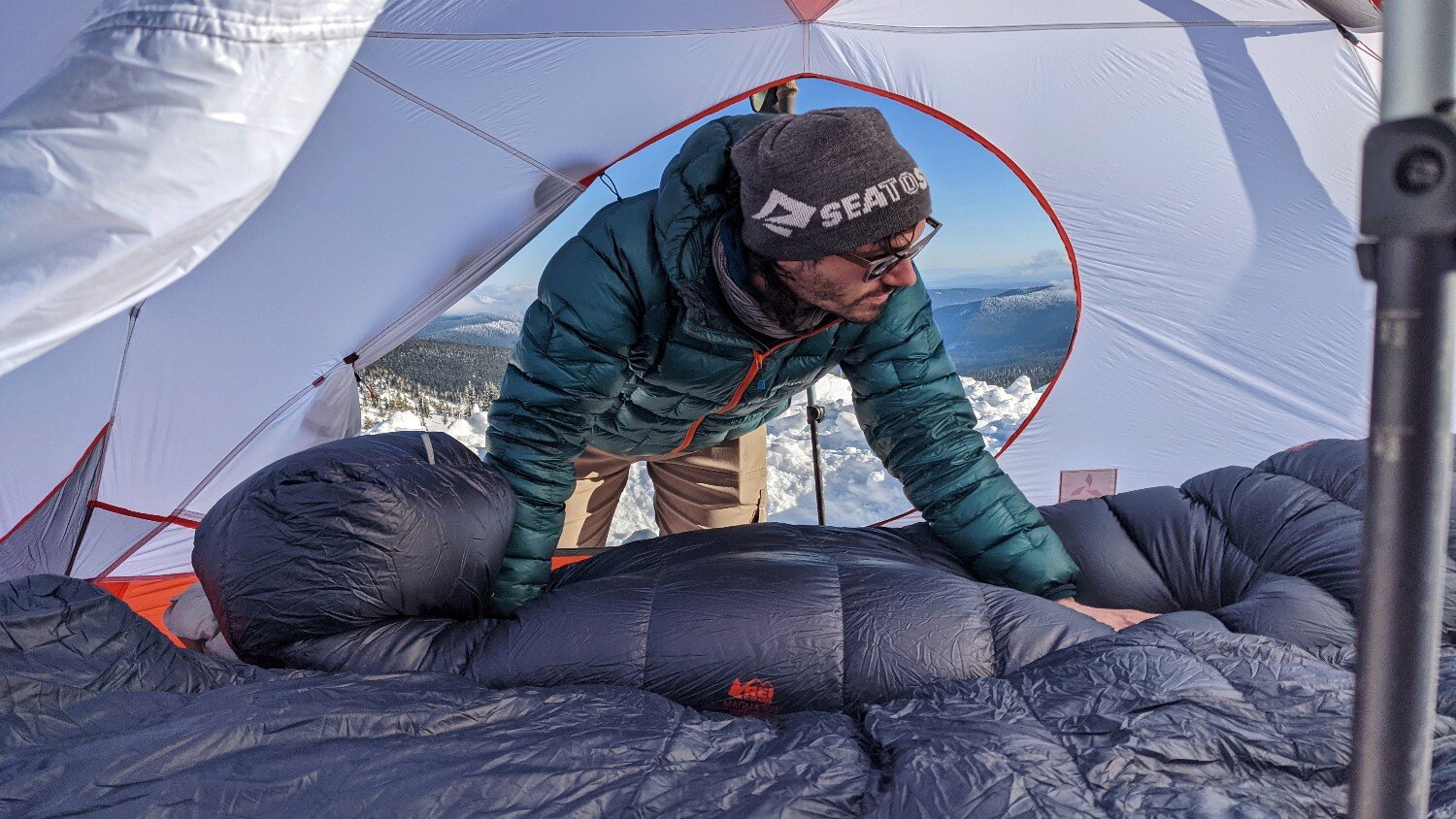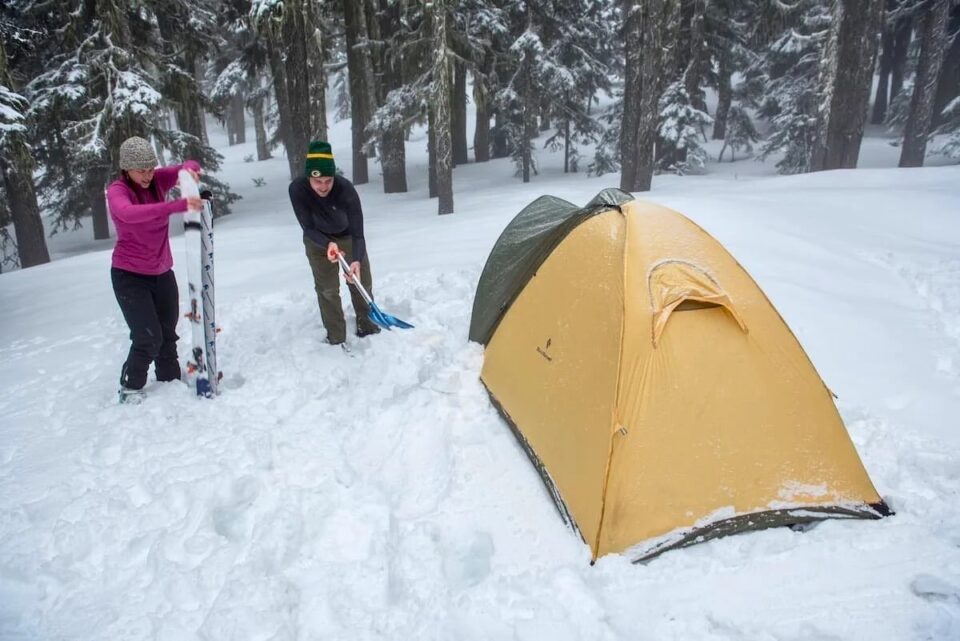Winter camping can be quiet, beautiful, and surprisingly comfortable if you prepare for the big three weather threats. Rain, wind, and frost each attack your comfort in different ways, so your setup has to cover all of them together.
This guide walks through practical, field tested steps that help you stay warm, dry, and safe without overpacking. Think of it as a simple system: choose a smart site, build a weather proof shelter, and manage heat from the ground up.
Choosing a site that reduces rain and wind problems

Your campsite does most of the work before you even open your bag. Look for natural protection like tree lines, small ridges, or boulders that block prevailing wind, but avoid dead branches or unstable slopes.
Stay off valley bottoms and dry riverbeds because they collect cold air and can flood after sudden rain. A slightly raised, flat bench of ground is ideal, and a quick check for pooling water or mud lines tells you if the spot drains well.
Angle your tent door away from wind and place a small tarp or groundsheet under the tent to stop splashback. If you need supplies or want to compare winter specific gear, finding more on camping store online is a convenient way to explore insulated pads, winter stakes, and storm worthy tarps without guessing what matters.
Pack snow or soft soil down before pitching so the floor does not settle overnight. Then stake aggressively, using rocks, buried anchors, or deadman sticks if the ground is frozen and normal pegs will not hold.
Building a shelter that handles wet snow, gusts, and frost

In winter, small gaps become big issues, so tension your fly tight and lower the profile of your shelter. A well tightened fly sheds rain faster and reduces flapping noise that can keep you awake.
If heavy snow is expected, clear it off the roof during the night to prevent sagging and fabric stretch. Use guy lines on all points, even if the start of the night feels calm, because wind often rises after midnight.
Ventilation matters more than people think in cold weather. Crack a vent or leave a small opening so moist breath escapes, otherwise condensation freezes on the inner wall and melts onto you when the sun hits.
A tarp can add a second weather layer if set low and angled like a roof. Keep it far enough from the tent to avoid trapping moisture, but close enough to block sideways rain.
Staying warm through layering, ground insulation, and routines

Frost steals heat from your body mainly through the ground, so prioritize insulation under you. Use a high R value sleeping pad, and if you have two pads, place the foam one on top of the inflatable so it stays warmer and protects against punctures.
Your sleeping system should be rated lower than the forecast low. Wear dry base layers to bed, add a light mid layer if needed, and keep a beanie on because your head loses heat quickly while you sleep.
Never go to bed cold. Eat a warm meal, do a short walk or light exercises, and then slip into the bag while your body is generating heat.
Manage moisture all day because damp clothes turn into cold clothes at night. Change socks before sleeping, hang wet items in a sheltered spot, and avoid sweating by adjusting layers as you hike.
Wind chill can be brutal when you stop moving, so keep a puffy jacket and shell accessible. Small habits like tightening cuffs, closing vents during gusts, and sitting on an insulated pad add up fast.
Conclusion
Camping is about stacking small advantages that keep rain off you, wind away from you, and frost below you. Pick a protected site, build a tight ventilated shelter, and treat warmth as a system from the ground up, and you will wake to a quiet winter morning feeling ready for the day.

